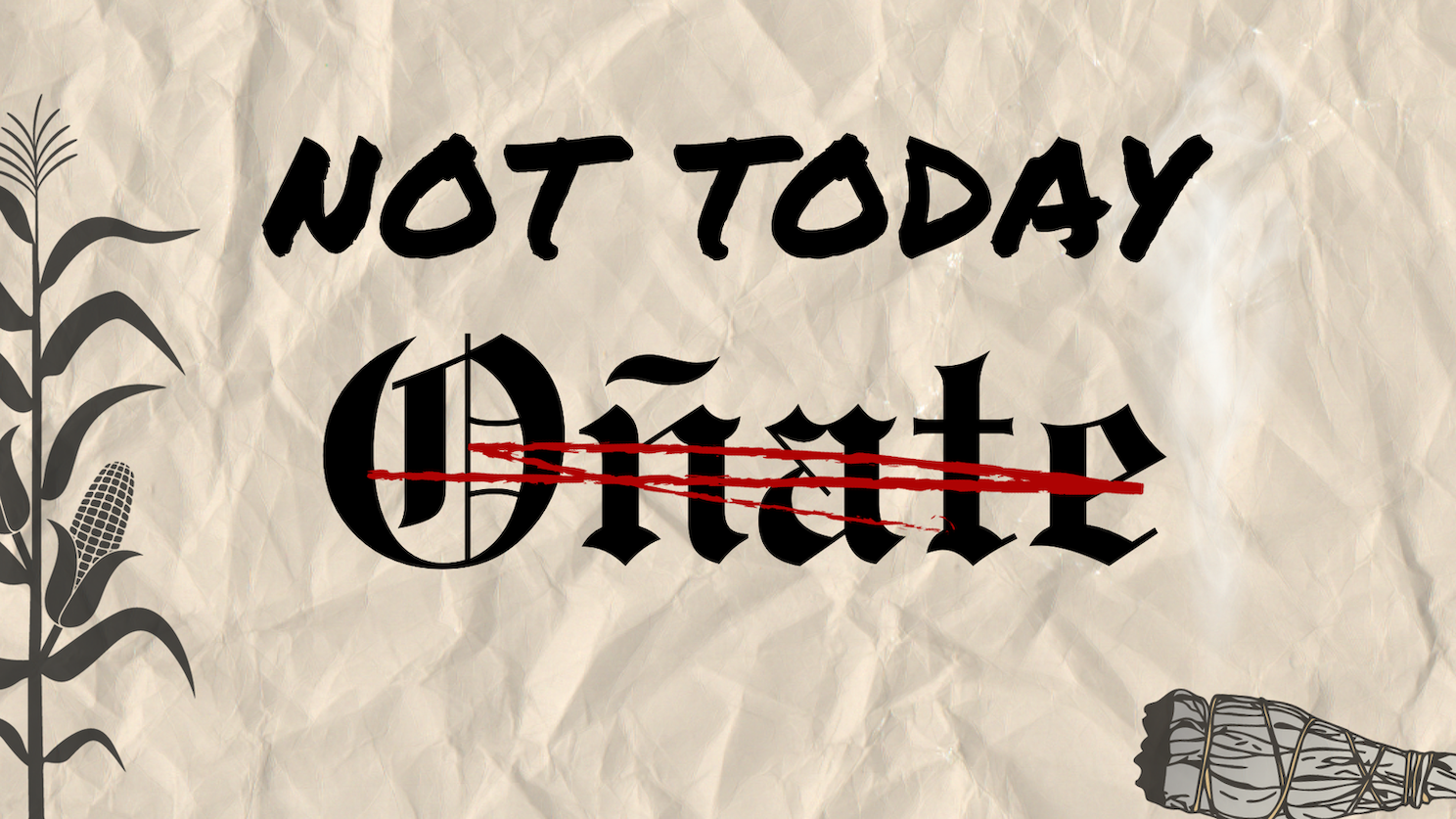On September 28, community members gathered peacefully to celebrate the postponement of the re-installment of the Juan de Oñate monument to the public space outside the Española Municipal Complex. That peace was shattered when Ryan Martinez, an election denying conspiracy theorist in a MAGA hat, pulled a handgun from his waistband and shot (Link to news story here) Indigenous activist Jacob Johns in the stomach.
To understand why the Oñate statue is causing such conflict in New Mexico, we must first understand the past.
Juan de Oñate was a Spanish conquistador who played a significant role in the occupation of New Mexico in the late 16th century. In 1598, Oñate led a group of Spanish settlers in an expedition to establish a Spanish presence in the region. His occupation marked the beginning of Spanish colonization in New Mexico.
Oñate’s occupation of New Mexico was accompanied by disturbing and brutal treatment of the Native American pueblo people in the area. The Spanish colonizers sought to convert the Native Americans to Christianity and extract resources from the land. This resulted in forced labor, land confiscations, and widespread abuses. One of the most recognized mass murders led by Oñate and his men was the Acoma Massacre.
The Acoma Massacre in 1599 stands as a particularly gruesome event, where hundreds of Acoma Pueblo residents were killed or enslaved. The Spanish forces overran the pueblo, resulting in the deaths of around 800 Acoma people. Survivors faced harsh punishments with Oñate ordering his soldiers to maim all Acoma men over 25 years old by amputating one of their feet.
Oñate’s actions and treatment of the Acoma and other New Mexico indigenous people have since been widely criticized for their inhumanity and injustice. His legacy continues to be a contentious issue in New Mexican history, as it underscores the dark and disturbing aspects of early European colonization. This had a direct impact on the banishment of Oñate along with his family surname.
In the evolving landscape of societal change, one cannot help but acknowledge the impactful shifts that have taken place since 2020. A prime example of this transformation can be found in Rio Arriba County at the Juan de Oñate statue, a commissioned piece first erected in 1994, at a county building in Alcalde which suddenly found itself at the epicenter of a compelling campaign advocating for its removal, which was successful.
Since then, the nationwide trend to rid various settings of politically charged regalia is a welcome sign of growing awareness about the urgent need to prioritize unity and equality over divisive symbols and slogans that have historically perpetuated discrimination and hostility.
It’s worth noting that the controversy surrounding the Juan de Oñate statue extends far beyond the removal campaign. It has faced two instances of vandalism – first, with its foot severed and ‘Remember 1680’ boldly painted on its base, and later, a painted red foot. Such acts of protest reflect the collective desire for change and the unwavering commitment to dismantling symbols that no longer align with our evolving communal values.
As we move forward on this path of social transformation, it’s crucial to acknowledge these developments as important milestones in our journey towards a more just and inclusive world.
The recent decision by the current Rio Arriba County Commissioner, Alex Naranjo (nephew of Emilio Naranjo who held power in the 90s), and the County Manager, Jeremy Maestas, who is currently running for re-election on the Española School Board, to bring back the statue to another county building was seemingly agreed upon, however the commission didn’t take official action and these two men alone, agreed to resurrect the statue. (article here)
Rio Arriba County, though fortunate with natural beauty and compassionate residents, has been no stranger to government corruption and police mistrust. This situation raises a series of pressing questions:
Why was there no police presence at the Española Municipal Complex on September 28, especially after deciding on postponement due to “unforeseen circumstances and in the interest of public safety”?
Why did it take over 15 minutes for law enforcement to apprehend the suspect, particularly when the incident occurred in the parking lot adjacent to the Rio Arriba County Sheriff’s station? Furthermore, why are those very elected officials and county employees who spearheaded the statue’s return now attempting to deflect blame? Do they now think that the reinstallment was wrong?
Regrettably, history has shown that accountability in Rio Arriba can often seem like a mere illusion. This recent incident marked the second eruption of violence at a rally concerning an Oñate statue in New Mexico, underscoring the imperative need to confront historical trauma and heal the affected communities. It is abundantly clear that the legacy of Juan de Oñate continues to evoke strong emotions and deep-seated conflicts. While we cannot change the past, we must confront it, acknowledge its painful parts, and commit to building a future that prioritizes unity, healing, and understanding.
Statues of this kind, as well as similar ones, should find their place in museums where they can be observed within a historical framework, alongside other items that offer insights into their historical significance. Placing them in public spaces may inadvertently convey messages of violence and hatred to members of our community, which can be avoided by relocating them to a more appropriate setting
As we move forward from yet another act of gun violence, let this incident not be another dark page in history, but a turning point towards a more inclusive, equitable, and compassionate future. This is the time to work together to heal the wounds of the past and build a better society that stands united, not divided. In unity, we have the strength to start to mend what was broken and to ensure that history, though challenging and extremely painful at times, serves as a remembrance for a more equitable tomorrow.

